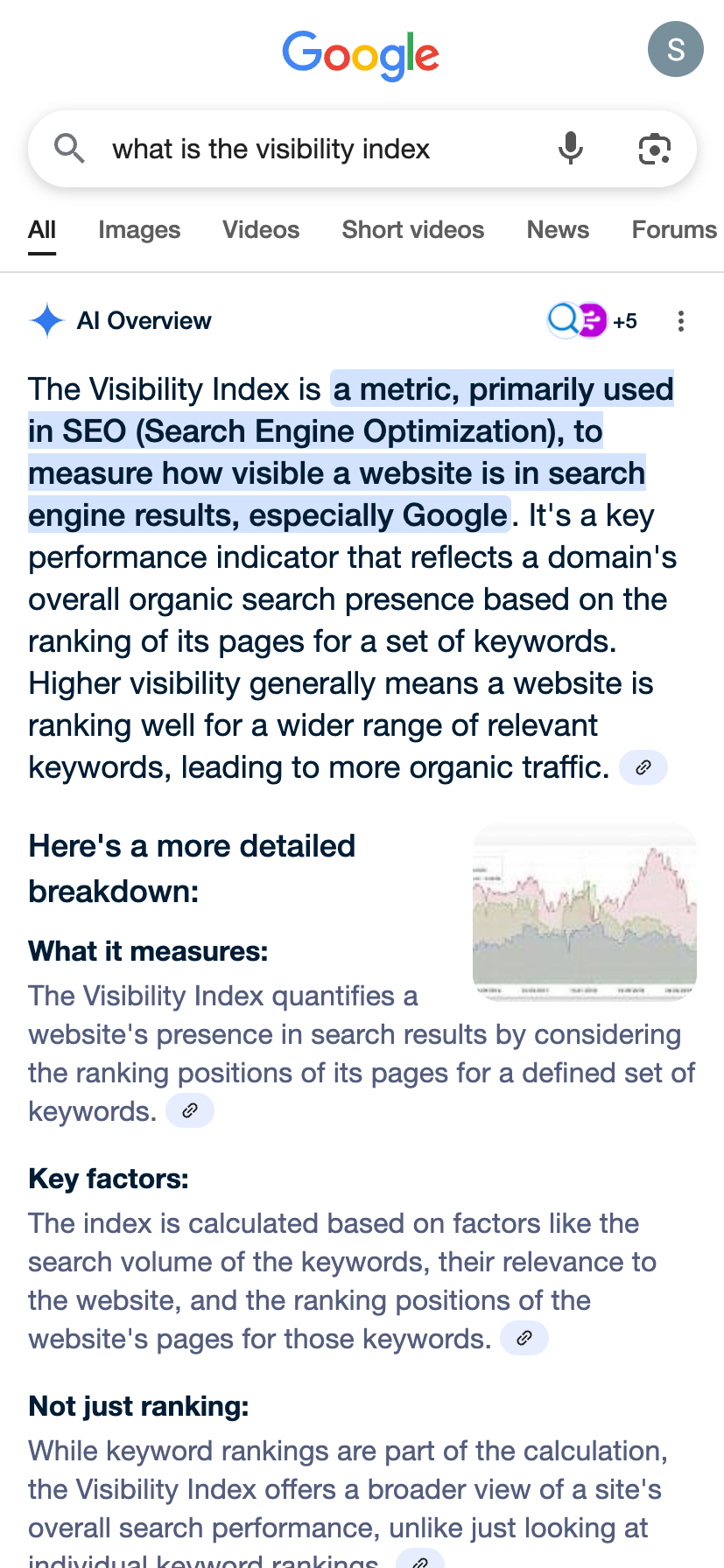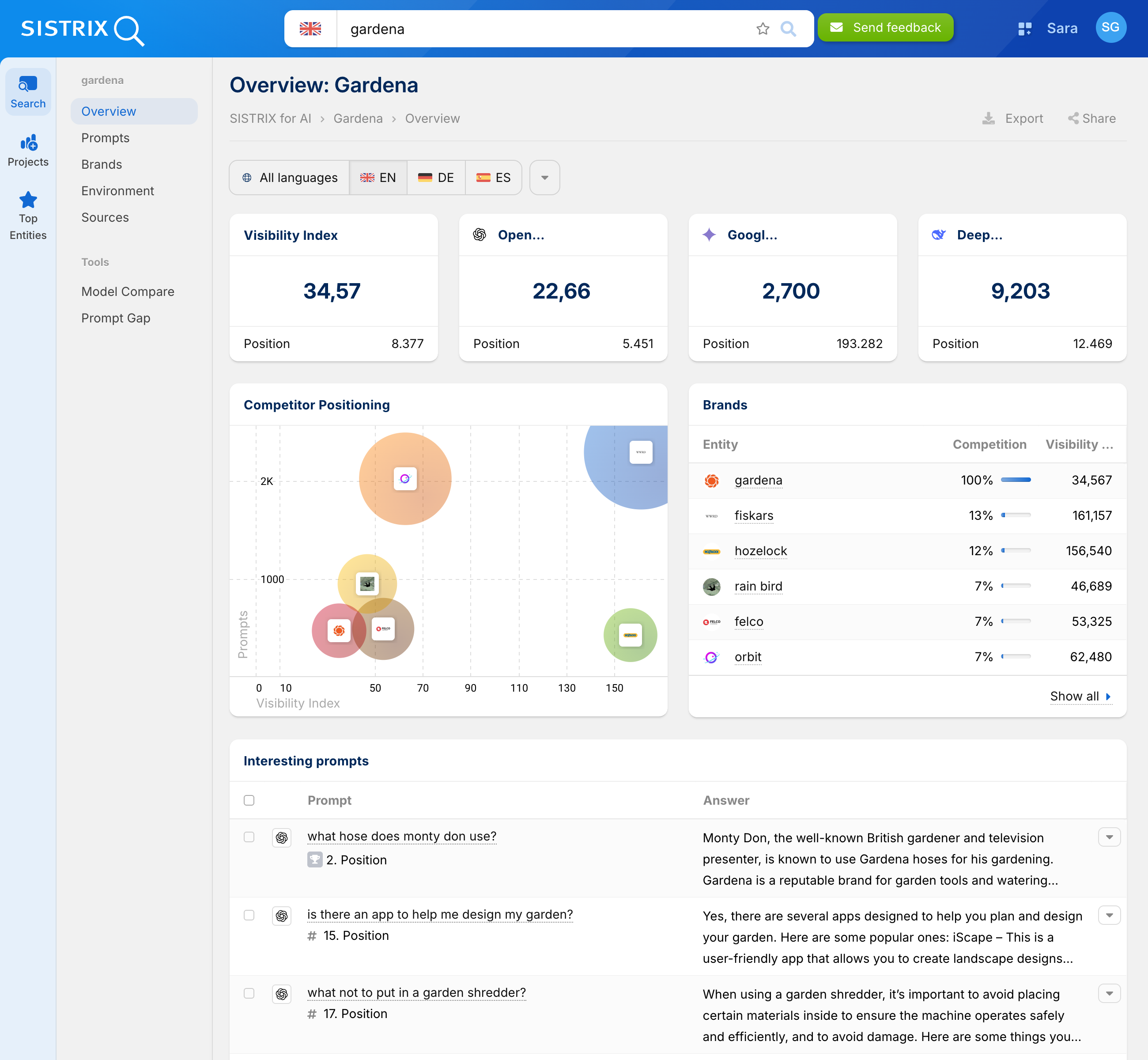Internet search is changing rapidly, and more fundamentally than it has in a long time. Artificial intelligence (AI) is the driving force behind this transformation, redefining the industry.
Even though the change is still in full swing, one thing is already certain: in three years from now, search will look fundamentally different than it does today.
This article explains the various approaches, products and methods of AI-supported search. We show you what can already be measured sensibly today and where there are still gaps in data analysis.
Google: The market leader in transition
As the undisputed market leader, Google, was surprised by the sudden success of ChatGPT in late 2022. However, after a brief period of reorientation, the company has regained its footing and is using its enormous strength in AI research to defend its position at the top. In classic web search, Google pursues two central approaches:
AI Overviews
AI Overviews are Google’s first step towards integrating AI features directly into the familiar search results list. Due to this direct integration, they are currently the most widely used AI feature in web search.
How do they work? In terms of content, AI Overviews are similar to the well-known “Featured Snippets”. The aim is to answer simple user questions directly on the results page. The key difference: while Featured Snippets are usually based on a single website as their source, AI Overviews draw information from a variety of well-placed organic search results. Google’s AI summarises this content and prepares it as a compact answer.
Google currently displays these overviews for around 15% of search queries in UK search (24%, US). It is very likely that this percentage will continue to rise.

The challenge with AIO measurement: In Google Search Console (GSC), impressions and clicks from AI Overviews are not shown separately. They are included in the general performance data of the website. This currently leads to a confusing picture for many website operators:
- Impressions increasing because your own URL is mentioned as the source in an overview.
- However, clicks are declining because users already receive their answer and no longer need to click on the website links.
The solution with SISTRIX: In SISTRIX, you can close this gap. We record exactly which keywords AI Overviews are displayed for and which websites are linked as sources. This allows you to analyse specifically:
- Which of your important keywords already have an AI Overview?
- Are you listed as a source there?
- Does your content offer enough unique information to stand out from other sources and justify the click?
To increase your chances of being cited as a source in AI Overviews, focus on clear, fact-based and well-structured content. Use question-and-answer formats, clear lists and precise definitions, as AI can easily process such formats. For more information, see our changelog: AI Overviews in SISTRIX
AI Mode
At the I/O 2024 developer conference, Google announced AI Mode for the United States. It is currently integrated there as a separate tab alongside the classic web search and combines the dialogue-oriented strength of a chatbot (such as Gemini) with Google’s comprehensive web index.
Since the end of July 2025, AI Mode is also available in the UK, and it is likely to be introduced in other countries, including Germany, in the future.
As its use is still optional, usage figures are modest. However, Google is considering making AI Mode the new default search mode. So if you start using it early on, you will gain a knowledge advantage.
The challenge with measurement: Similar to overviews, there is also a transparency issue here. Impressions and clicks from AI Mode flow into the general data in Google Search Console without being labelled. Google does not provide for separate evaluation.
The solution with SISTRIX: We at SISTRIX are already working intensively on integrating AI Mode into our product so that you will soon be able to perform meaningful analyses here as well.
AI search engines
While Google has adjusted its strategy, a number of new search engines specialising in AI have emerged. Among the best known are Perplexity and ChatGPT (with web search function enabled).
How do they work? These services essentially link two systems:
- A classic search index provides relevant websites for the topic entered.
- An AI language model reads and understands this content and uses it to formulate a comprehensive response.
The concept is similar to Google’s AI Overviews, but is often presented in a more modern, dialogue-based interface. Interestingly, both Perplexity and ChatGPT use Microsoft Bing’s index for their web searches.
The challenge in measuring: The results of these AI search engines are often very dynamic and fluctuate greatly. This is due to the combination of two variable systems: Web search results are constantly changing, and the AI interprets this content slightly differently with each query.
The solution with SISTRIX: In the new AI/chatbot tool from SISTRIX (currently in beta phase, under “Projects“), you can monitor the results of these search engines. Simply enter your most important search queries (prompts), and we will run them regularly for you. We present the collected results in a clear format so that you can track the visibility of your website in these new systems.
Chatbots
Chatbots such as ChatGPT, Google Gemini and Deepseek have enjoyed enormous popularity since their introduction around two and a half years ago. They are not only used for writing emails or translations, but increasingly also for answering knowledge-based questions. ChatGPT is now one of the ten most visited websites in the world.
The challenge with measurement: Unlike Google searches, chatbot responses rarely cite direct sources. This means it is unclear where the information comes from. Furthermore, once published, the data in AI models is usually static. There are no daily updates like with Google, only large, irregular updates when providers release a new model.

The solution with SISTRIX: Our new AI/chatbot tool sheds light on chatbot responses. Similar to what we do for Google or Amazon, we query a huge number of typical user requests from the major chatbots. Since source references are missing, we go one step further: We systematically evaluate the responses for entities. This means we recognise and count mentions of brands, people, places and products. For the first time, you can measure whether and how often your brand is mentioned as a relevant entity in the most important AI chatbots.
Summary and outlook
The era of AI search has is upon us, but measurability is still highly fragmented. Each platform, from Google’s AI Overviews to Perplexity to pure chatbots, requires its own approach to analysis.
For website operators and SEO experts, this means:
- Understand where and how your target audience searches for information.
- Measure where your brand is visible on these new platforms.
- Adapt your own content to ensure it is also present in AI-generated responses.
One thing is clear: if you want to be successful in the new search era, you need reliable data. Tools such as SISTRIX are essential for maintaining an overview in this dynamic landscape and making the right strategic decisions.